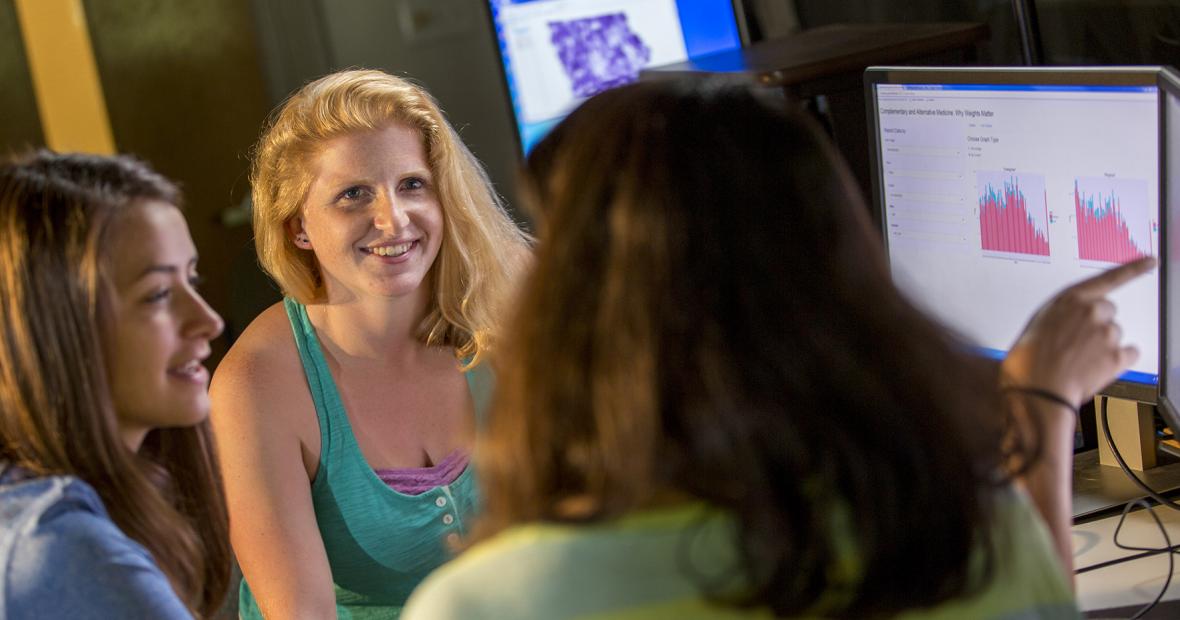Statistics and Society
Undergraduate research tends to evoke images of either a library or a laboratory. The Data Analysis and Social Inquiry Lab (DASIL) offers students in social studies and the humanities something different. The lab has computers with statistical analysis programs that can help students and faculty understand trends in data and visually represent data in charts and graphs and on maps.
Grinnellians Helping Grinnellians
DASIL helps students and faculty analyze and visualize data on an individual basis and brings data analysis into the classroom. It also provides experiential learning for student tutors. “We do the students a disservice unless we make sure they have some level of technological understanding,” says Kathy Kamp, professor of anthropology and Earl D. Strong Professor of Social Studies. DASIL is a unique program in that it is staffed by undergraduates.
“When we’re not helping students,” says Beau Bressler ’16, a DASIL staffer, “we’re working on projects for faculty — usually gathering or organizing data.”
Last year, DASIL launched an independent website that hosts a number of data visualizations. Most of the visualizations make use of publicly available — usually government-collected — information.
One of the projects DASIL is taking on is an interactive map tracking land-holding, using historical records, in three Iowa townships in Poweshiek and Jasper counties.
An earlier major project DASIL was involved in was English professor James Lee’s Global Renaissance, an analysis of 25,000 texts from 1470 to 1700 using data mining techniques to visualize the specific language Shakespeare's England employed to describe different races and places across the globe before colonialism.
Learning by Teaching
Bressler has worked at DASIL for more than a year. During his time there, he has assisted students and professors and has done his own research for a Mentored Advanced Project (MAP). As an economics major, he works primarily on econometrics problems. The students who work with DASIL are fairly specialized, says Julia Bauder, social studies and data services librarian. “We try to have a student fluent in geographical information systems, an economics major who has taken econometrics, a mathematics major, and at least one person doing qualitative research and able to use NVivo qualitative analysis software.”
“Sometimes people come and they know what they want to research and what they’re trying to do, but they don’t know the software or don’t know what variables to use,” says Bressler. “I plan on going into research, so being exposed to other students’ research prepares me to do a broader array of research.” In the spring semester, Bressler helped Ope Awe ’15 analyze data for a MAP to determine what factors in a developing country influence entrepreneurship.
“DASIL is a place you can come and learn to work with data,” says Bressler. “Working with people — especially when they’re other students who know how to work with data — can make statistics easier to understand.”
Beau Bressler ’16 is an economics major from San Diego, Calif.

